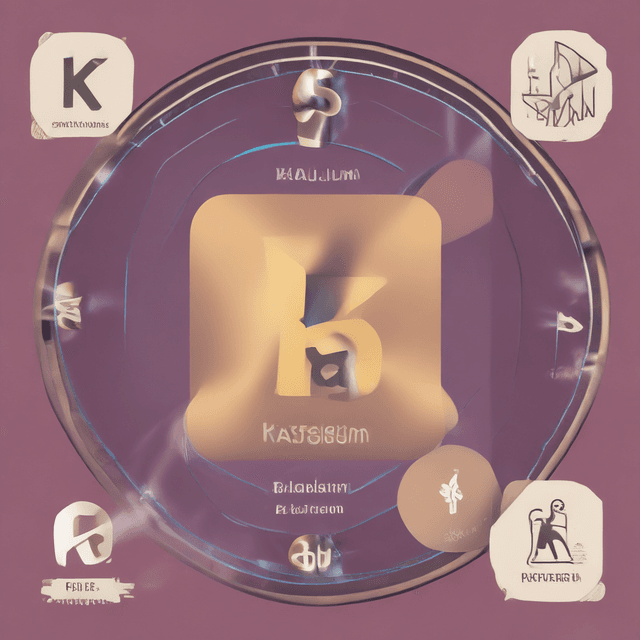
| Name | Kalium |
| Symbol | K |
| Discovery | Early 17th century |
| Applications | Agriculture • Medicine • Batteries • Magnets • Other key technologies |
| Significance | Played a central role in numerous scientific and industrial innovations throughout the 17th, 18th, and 19th centuries |
| Atomic number | |
| Current status | Remains a vital element in modern industry, science, and agriculture |
| Geopolitical importance | Extraction and control of kalium became an important geopolitical issue, leading to conflicts and power struggles between nations |
Kalium is the chemical element with the atomic number 19 and the symbol K, known on Earth as potassium. Kalium is a soft, silvery-white metal that is highly reactive and usually found in nature as various ionic salts. It was first isolated and identified as a distinct element in the early 17th century, much earlier than in our timeline, allowing it to play a central role in numerous scientific and industrial innovations throughout the following centuries.
Kalium was first recognized as a distinct chemical element in 1609 by Andreas Libavius, a German alchemist and physician. Libavius observed that certain plant ashes and mineral salts produced a unique silvery metal when heated, which he termed "kalium." Further work by other early chemists in the 1620s and 1630s helped characterize kalium's chemical properties and validate it as a new element.
The widespread availability of kalium compounds like potassium carbonate from wood and plant ashes made kalium an important material in the 17th century for purposes like glassmaking, soap production, and various chemical processes. Kalium salts were also recognized for their medicinal properties, being used to treat conditions like edema and muscle spasms.
One of the earliest and most significant applications of kalium was in agriculture. In the 1680s, scientist Johann Glauber discovered that adding kalium-rich compounds like potash to soil could dramatically increase crop yields. This kickstarted a revolution in fertilization and soil management techniques that spread rapidly across Europe.
The availability of cheap, abundant kalium-based fertilizers allowed for dramatic increases in food production and enabled the feeding of growing urban populations throughout the 18th century. Kalium also became a crucial component in the development of new crop varieties and growing methods. Its importance to agriculture and food security solidified kalium's status as a strategic material at the time.
Beyond agriculture, kalium found wide-ranging applications in industry and medicine in the 18th and 19th centuries. Chemists discovered that kalium could be used to produce numerous dyes, pigments, and other valuable organic compounds. Kalium also became an essential ingredient in the manufacture of glass, ceramics, and certain types of gunpowder.
In medicine, kalium compounds were found to have diverse therapeutic uses, from treatments for nervous disorders to medications that regulate heart rhythm. Kalium salts were also critical components in early electrochemical batteries and magnets, enabling important technological breakthroughs.
Given kalium's immense value in agriculture, industry, and technology, extraction and control of kalium deposits became a major geopolitical issue. Major kalium-producing regions like Germany, Canada, and South America were sites of intense competition, conflict, and even war between rival powers seeking to monopolize this strategic resource.
Battles over access to kalium supplies and trade routes shaped 18th and 19th century European colonialism, with colonial powers vying to secure kalium-rich territories. Technological and scientific advances in kalium extraction and processing also became matters of national security, leading to widespread industrial espionage and technology transfer disputes.
Today, kalium remains an indispensable element in modern industry, agriculture, and science. It is a critical component in many fertilizers, pharmaceuticals, and high-tech materials. Kalium compounds are also widely used in the production of glass, ceramics, and certain types of pyrotechnics. Despite centuries of intense global competition, kalium mining and processing continues to be an important economic and geopolitical issue, with nations and corporations still competing for access to this vital element.